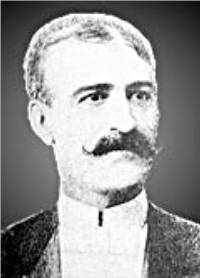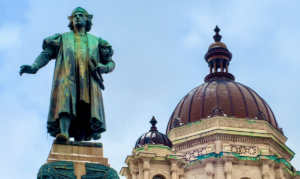By Basil M. Russo, ISDA National President
On March 14, 1891, prominent New Orleans citizens, including future mayors and governors, led America’s largest-ever lynch mob into the darkest pages of U.S. history.
Holding torches, rifles and rope, this mob of vigilantes stormed into Parish Prison and pulled out 11 Italian Americans.
Thousands assembled outside the jail and cheered as the wrongfully accused were riddled with bullets, hanged and ripped apart for souvenirs.
The horror of that night shocked the world, but today one will be hard-pressed to find the story in high school or college textbooks. It was the worst of more than 40 lynchings carried out against Italian Americans between the late-19th and early-20th centuries.
Here’s the story of the innocent 11:
It began with the murder of David Hennessy, New Orleans’ Superintendent of Police, on the evening of Oct. 16, 1890. A popular policeman, Hennessy was gunned down as he walked home from work. While he bled to death, a witness asked him who did it. “Dagoes,” he reportedly whispered, using a slur for Italians.

That slur was used often in New Orleans, which was home to more Italian immigrants than any other Southern state at the time. Between 1884 and 1924, nearly 300,000 Italian immigrants, most of them Sicilian, moved to New Orleans, earning the French Quarter the nickname “Little Palermo,” according to History.com.
The immigrants were hardworking and religious, yet they were largely perceived as flawed and dangerous criminals who consorted with the mafia. After Hennessy was killed, innocent Italians were dubiously rounded up, imprisoned, and many of whom were tried for murder.
The court proceedings resulted in not guilty verdicts and mistrials due to an utter lack of evidence. Enraged city officials, prominent newspaper columnists and everyday citizens called for their public execution.
The following Italian Americans would lose their lives:
–Antonio Bagnetto, fruit peddler: Tried and acquitted.
–James Caruso, stevedore: Not tried.
–Loreto Comitis, tinsmith: Not tried.
–Rocco Geraci, stevedore: Not tried.
–Joseph Macheca, fruit importer and Democratic Party political boss: Tried and acquitted.
–Antonio Marchesi, fruit peddler: Tried and acquitted.
–Pietro Monasterio, cobbler: Mistrial.
–Emmanuele Polizzi, street vendor: Mistrial.
–Frank Romero, ward politician: Not tried.
–Antonio Scaffidi, fruit peddler: Mistrial.
–Charles Traina, rice plantation laborer: Not tried.
Here’s an excerpt of a New York Times piece, published two days after the mass lynching, that reflected the boiling hate against Italian Americans:
“These sneaking and cowardly Sicilians, the descendants of bandits and assassins, who have transported to this country the lawless passions, the cut-throat practices, and the oath-bound societies of their native country, are to us a pest without mitigations…These men of the Mafia killed Chief Hennessy in circumstances of peculiar atrocity…Lynch law was the only course open to the people of New Orleans to stay the issue of a new license to the Mafia to continue its bloody practices.”
Those who orchestrated and carried out the lynching went free, sparking a diplomatic crisis between the U.S. and Italian governments.
To help resolve the issue and curry favor with Italian American voters, U.S. President Benjamin Harrison held the first national Columbus Day celebration in 1892, 400 years after the navigator’s historic discovery of North America.
New Orleans Mayor Apologizes for Mass Lynching of Italians in 1891
That same year, Columbus Circle — with its towering 76-foot statue — was constructed at the foot of New York City’s Central Park. Over the next several decades, scores of statues would go up in Italian American neighborhoods.
The monuments, in large part, were funded by poor Italian Americans who spent years cobbling together funds for their installation.

The statues and parades were designed to fuel assimilation in the face of bloody discrimination and economic suppression. In the summer of 2020, several statues were torn down by misguided mobs who had splintered away from peaceful police brutality protests.
It’s ironic that these symbols of anti-discrimination were toppled by folks who didn’t bother to understand why they were put up in the first place.
Today, Pro-Columbus lawsuits are unfolding in major cities across the U.S. On March 11, New York Supreme Court Justice Gerard Neri ruled in favor of the Columbus Monument Corp. and saved the navigator’s statue in Syracuse.
Syracuse city officials, who have already wasted thousands of dollars on their failed legal effort, are planning an appeal.

Syracuse Columbus Statue Saved by Italian American Community
Meanwhile, other lawsuits raised by Italian American groups are being litigated in Chicago, New Jersey, Philadelphia, Pittsburgh and elsewhere.
This large-scale legal effort to save Columbus has, in part, been spearheaded by The Conference of Presidents of Major Italian American Organizations, FILITALIA International, Italian Sons and Daughters of America, the Commission for Social Justice (OSIA), the Italian American One Voice Coalition, the Joint Civic Committee of Italian Americans, the Italian American Alliance, and attorney George Bochetto.
Bochetto saved Philadelphia’s 146-year-old Columbus statue in Marconi Plaza this past August, after Philly Mayor James Kenney failed to prove the legality of his decision to remove it.
The Columbus statues are a prism we peer through to connect with our ancestors’ misunderstood and hard-fought rise in America, and we will work inside the bounds of the law to protect and preserve these historical pieces for generations to come.
And as we look back on that fateful day 131 years ago, we know we’re honoring the memory of the innocent 11 and all those who came to America in search of a better life.
“The past is a source of knowledge, and the future is a source of hope. Love of the past implies faith in the future.” -Stephen Ambrose
Make a Pledge and join Italian Sons and Daughters of America today.



